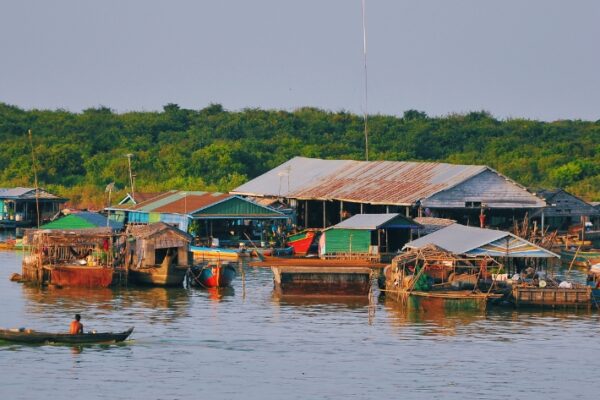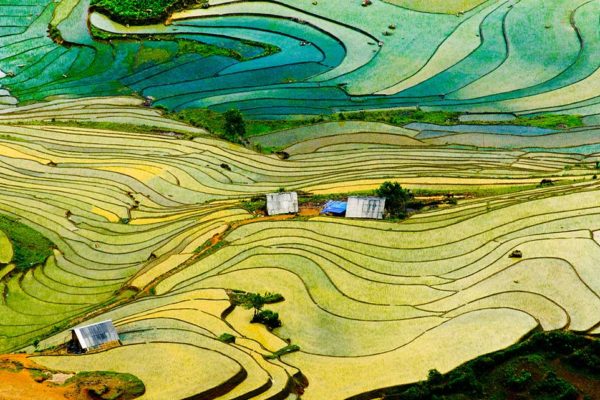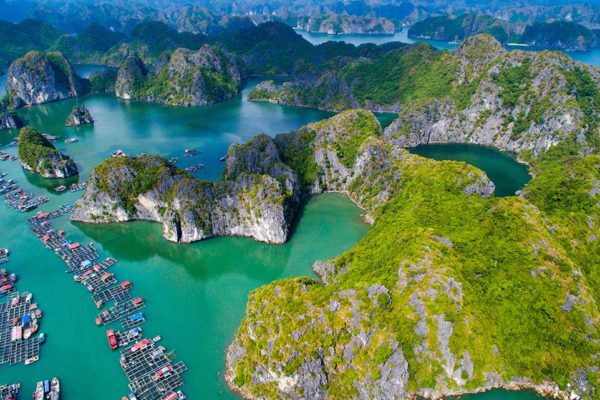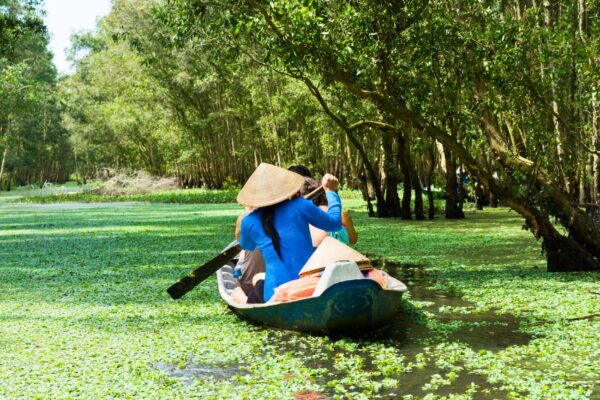Why Vietnam’s Floating Markets Are Must-See For Every Traveler
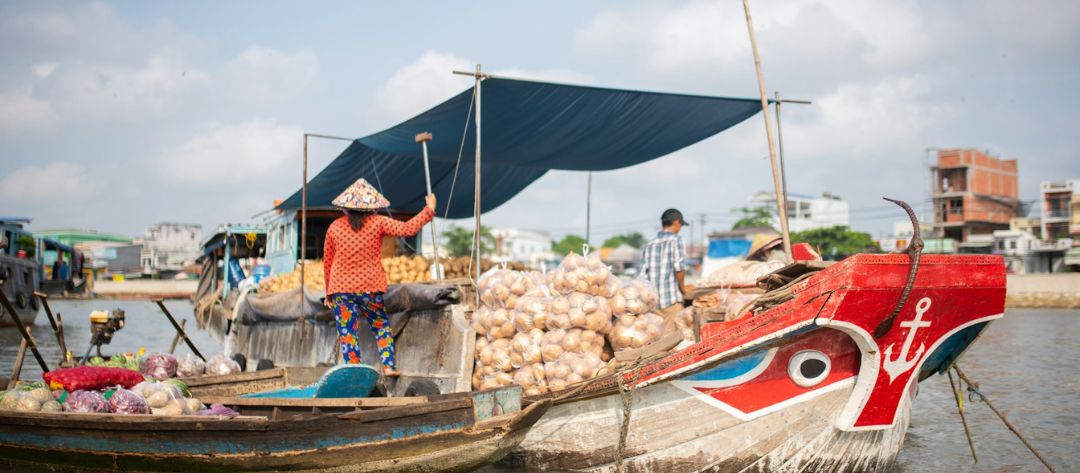
This article invites you on an immersive journey to explore the captivating floating markets in Vietnam. From the iconic Cai Rang to the lesser-known gems, let’s delve into their rich history, vibrant daily life, and the unique cultural tapestry they weave, offering practical tips for travelers eager to experience these aquatic wonders firsthand, especially within the scene. Prepare to be enchanted by the rhythmic paddle strokes, the lively banter of vendors, and the
What Makes Floating Markets In Vietnam So Unique?
The distinctiveness of floating markets in Vietnam lies in their organic evolution and the ingenious adaptations of the local people to their water-centric environment. Unlike traditional markets on land, these aquatic marketplaces operate entirely on boats, ranging from small sampans laden with a single type of produce to larger vessels serving as mobile mini-restaurants or even floating homes.
Steeped in history, these markets arose centuries ago in the Mekong Delta and other riverine regions where waterways were the lifelines for transport and trade. Farmers and traders navigate their boats laden with fruits, vegetables, and local goods, converging at river junctions to buy, sell, and barter. Many families continue to live and work aboard their boats, embodying a deep connection to the rhythms of the water.
A truly iconic feature is the “cây bẹo”—a tall bamboo pole rising from each boat with a sample of produce hanging high above the water—a vivid, silent signal advertising what’s for sale, sparing vendors from raising their voices. This ingenious tradition creates a colorful mosaic of floating stalls, instantly recognizable and uniquely charming.
But these markets are more than commerce centers—they’re dynamic social hubs where local communities meet, share stories, and celebrate their intertwined lives with the river. Visiting them is stepping into a living heritage where nature, culture, and daily life blend seamlessly. For travelers, exploring Vietnam’s floating markets means immersing in a sensory feast of sights, smells, and flavors, all flowing gently on the waterways that shape a timeless way of life.
>> Read More: What To See In Mekong Delta Of Vietnam – Uncover The Hidden Charms
Top 4 Floating Markets – From Dawn to Culture
Cai Rang Floating Market: A Symphony of Sights and Sounds
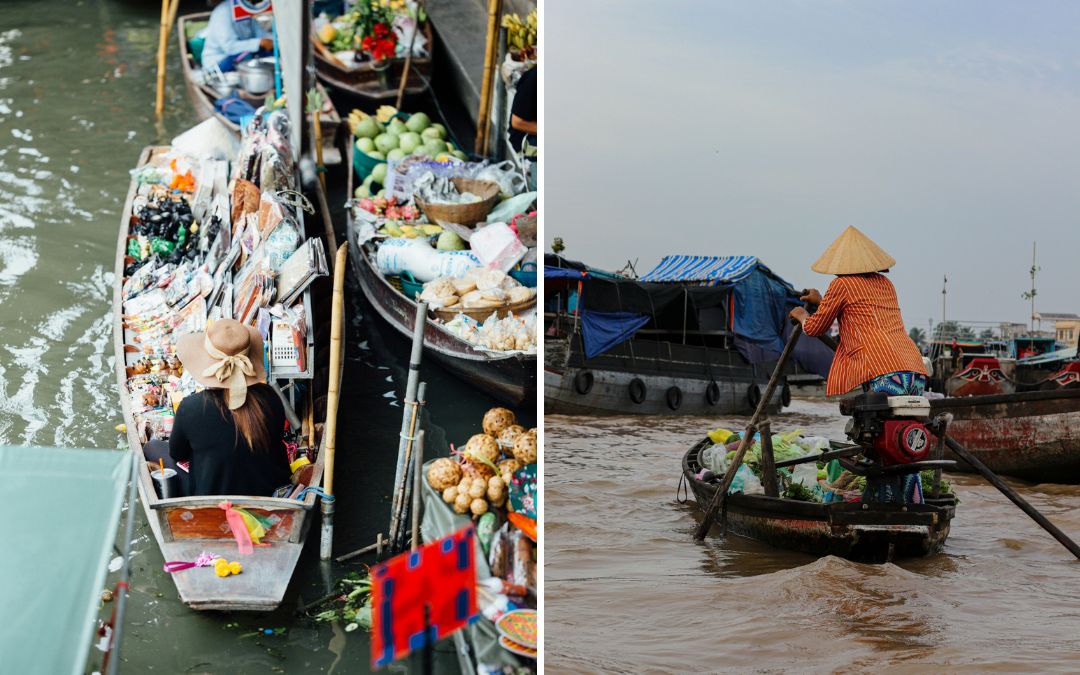
Located near Can Tho City, Cai Rang Floating Market is arguably the most famous and largest Mekong Delta floating market.
Opening Hours
- Daily from 4:00 AM to 10:00 AM (peak activity between 5:00 AM and 8:00 AM)
- About a 40-minute boat ride from Can Tho City
What Makes It Unique?
In this vibrant wholesale market, you’ll see larger boats functioning as mobile warehouses, overflowing with watermelons, pineapples, gourds, durians, and a wide variety of other tropical fruits and vegetables. Smaller boats maneuver through the area, serving as floating coffee shops, noodle stalls, and even convenience stores, catering to the needs of both traders and visitors.
Picture yourself sipping a strong Vietnamese iced coffee (priced between $1.50 and $2.50) while gliding past boats stacked high with fresh produce, all under the warm glow of the morning sun reflecting off the water.
Beyond the sheer volume of goods, Cai Rang offers a fascinating insight into the intricacies of riverine trade. Vendors expertly handle their boats, using long poles to push off other vessels, and displaying their “cây bẹo” to announce their offerings.
Don’t be shy to approach a boat that catches your eye. Many vendors are happy to sell small quantities directly to tourists, offering a chance for fresh, often exotic, fruit tasting right from the source. Hu Tieu (noodle soup) is a popular breakfast choice here, cooked and served hot from tiny floating kitchens for around $2 – $4.
>> See Tour: Ho Chi Minh City to Mekong Delta Tour
Long Xuyen Floating Market: Untouched Charm
Venturing further into the Mekong Delta, Long Xuyen Floating Market in An Giang Province offers a truly off-the-beaten-path experience. This is significantly less touristy than Cai Rang, providing a raw and authentic glimpse into the daily lives of the local community. It’s a wholesale market, primarily catering to regional distributors and local residents.
Opening Hours
- Typically starts at 5:00 AM, with bustling activity continuing for several hours
- Located in An Giang Province, further into the Mekong Delta
What Makes It Unique?
The market comes alive early, around 05:00, and is a bustling hub of activity where boats laden with agricultural products, fresh fish, and prepared meals converge.
What makes Long Xuyen special is its genuine, untouristed vibe. You won’t find many souvenir stalls here; instead, you might witness honest trade and everyday interactions. Many vendors live on their boats, with floating houses dotting the riverside, adding to the immersive sense of local life.
Having breakfast on one of the floating food stalls, enjoying a steaming bowl of bún cá (fish noodle soup) for around $2 – $3, while observing the morning rush, is an unforgettable experience.
>> See Tour: Southern Vietnam Tour Of Discovery
Phong Dien Floating Market: An Authentic Local Experience
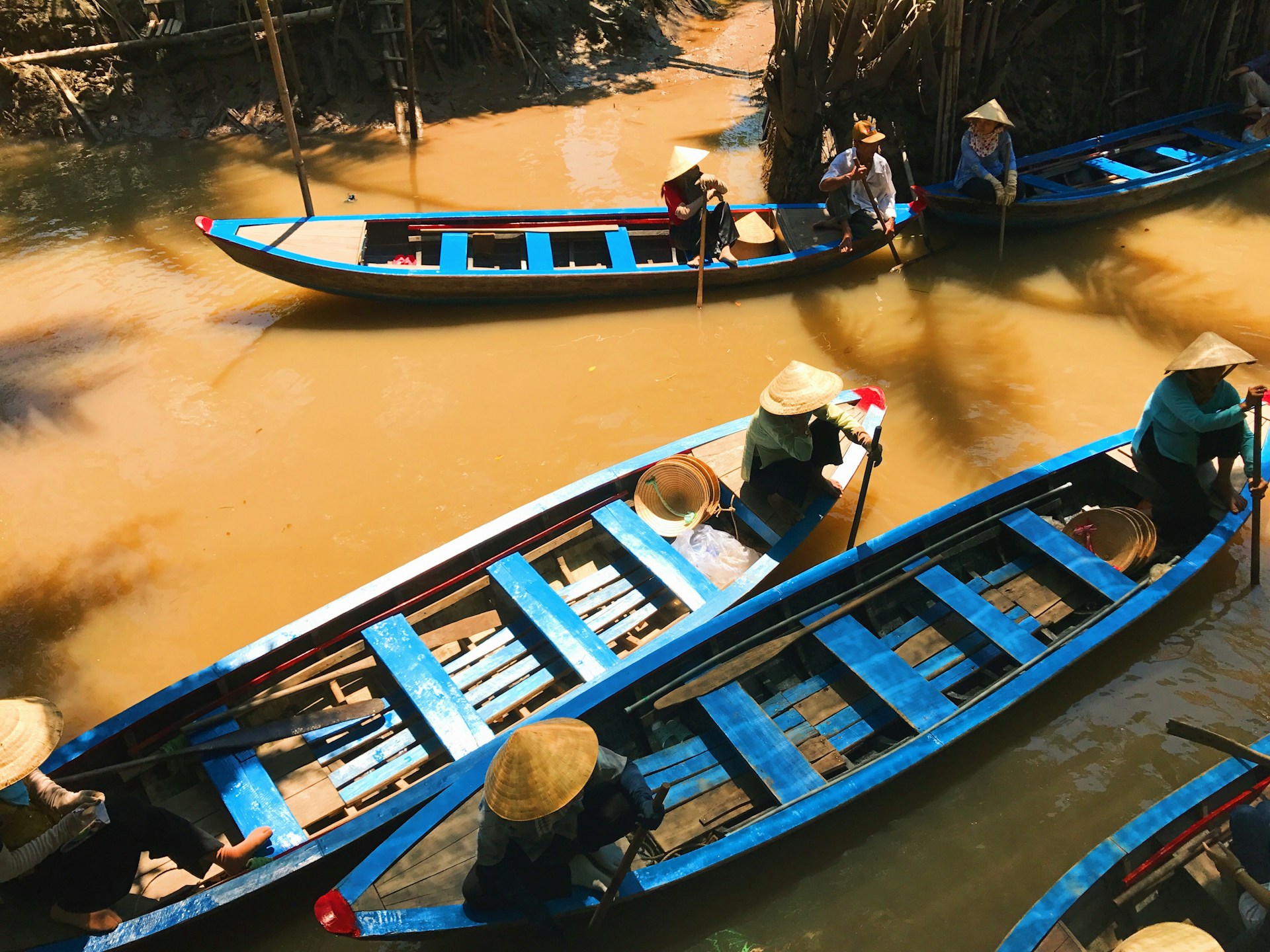
For those seeking a more tranquil and authentic encounter with a floating market in Vietnam, Phong Dien Floating Market, also near Can Tho, offers a delightful alternative to the larger Cai Rang. While smaller in scale, Phong Dien retains a more traditional and less commercialized atmosphere. It’s an ideal spot to witness the local way of life undisturbed by large tourist crowds.
Opening Hours
- Typically starts at 5:00 AM, with bustling activity continuing for several hours
- Located in An Giang Province, further into the Mekong Delta
What Makes It Unique?
Phong Dien is known for its smaller, often hand-rowed boats, where trading focuses more on retail, creating a direct connection between farmers and individual buyers. The variety of goods sold here is diverse, including not only fruits and vegetables but also handicrafts, household items, and local snacks.
The market operates in sync with the tide, becoming especially lively during high tide. It features traditional sales calls, which offer a charming contrast to the visual advertising of the “cây bẹo” found in larger markets.
Visiting Phong Dien provides a more intimate interaction with the locals and allows for a deeper appreciation of the quiet ingenuity of riverine commerce.
>> See Tour: The Best of Mekong Delta Tour
Tra On Floating Market: A Glimpse into Rural Life
Located in Vinh Long Province, Tra On Floating Market is another lesser-known but equally captivating floating market. It is the last major market on the Hau River before it flows into the East Sea. Like Phong Dien, Tra On operates according to tidal cycles, becoming particularly vibrant during high tide.
Opening Hours
- Most active during high tide in the early morning hours
- Located in Vinh Long Province, at the confluence of Hau Giang and Mang Thit rivers
What Makes It Unique?
This market primarily serves as a wholesale hub for fresh tropical fruits and seasonal agricultural products, sourced directly from nearby orchards and farms. Travelers may see boats laden with durian, mangosteen, star apples, and a variety of other local specialties. The atmosphere is further enhanced by smaller boats offering coffee, iced tea, and simple meals to the traders.
Tra On provides a serene yet lively environment, offering a wonderful opportunity to witness the agricultural backbone of the Mekong Delta and the essential role these products play in the rural economy.
>> Explore More: A Complete Guide On Siem Reap’s Floating Villages
Beyond the Boats: What to Expect
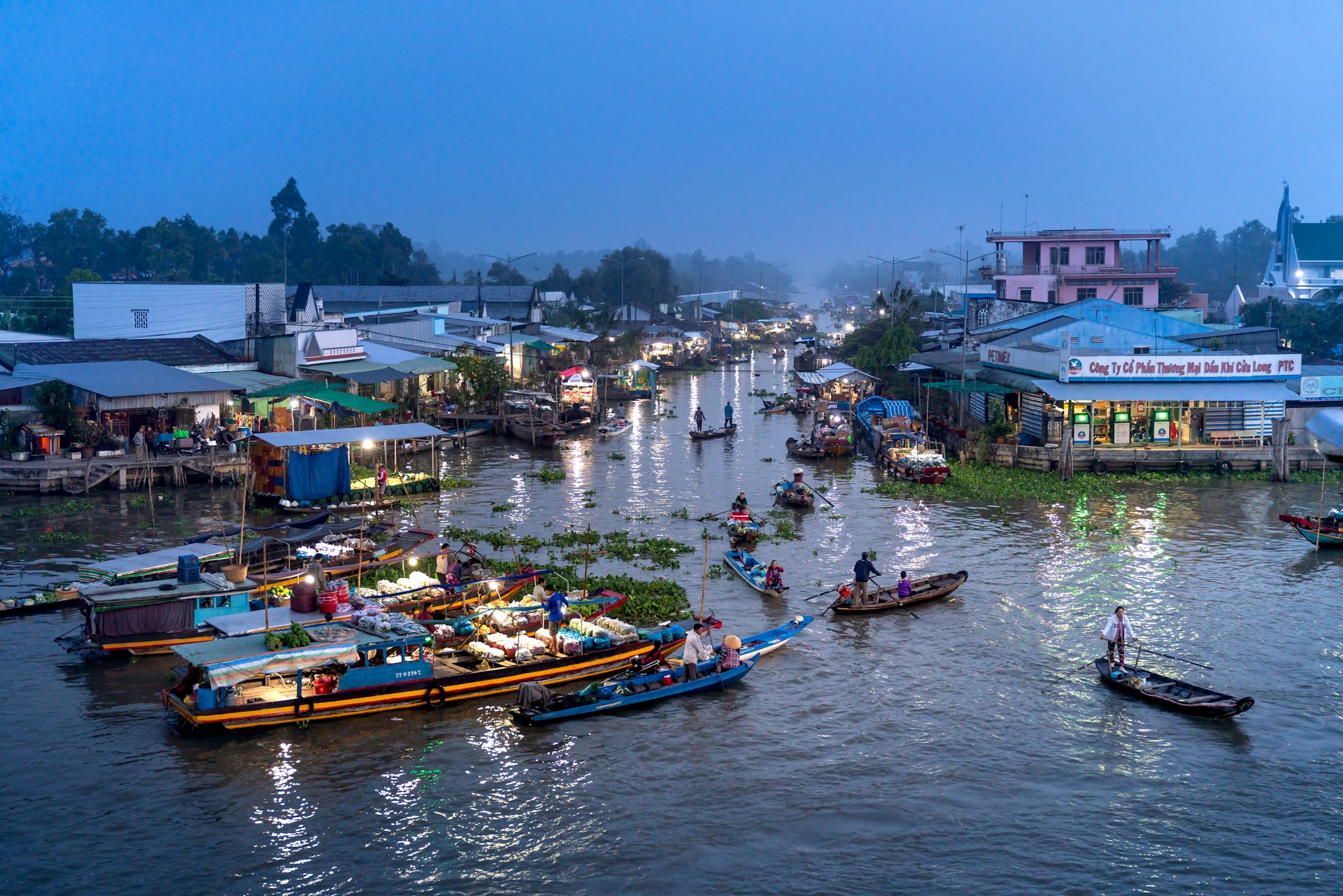
A visit to a floating market in Vietnam is far more than just a shopping trip; it’s a multi-sensory adventure.
- Culinary Delights: Prepare to eat! The food boats are an integral part of the experience. From steaming bowls of hủ tiếu (noodle soup) or bún riêu (crab noodle soup) to freshly nem nướng (grilled pork skewers) and a myriad of tropical fruits, the culinary offerings are endless and incredibly fresh. Don’t miss trying local specialties like bánh mì (Vietnamese baguette) or the unique bánh xèo (sizzling pancake) cooked right on the water. Prices are incredibly reasonable, typically ranging from $1 to $5 for a hearty meal.
- A Kaleidoscope of Goods: While agricultural products dominate, there are boats selling household goods, traditional crafts, and even live animals at some larger markets. Keep an eye out for unique souvenirs, though remember that the truly authentic markets are more focused on local commerce than tourist trinkets.
- Interactions with Locals: The people of the Mekong Delta are known for their warmth and hospitality. While language barriers might exist, a smile and some simple gestures go a long way. Many vendors are happy to engage with curious travelers, and some may even invite you to sample their produce. This genuine interaction is often the most rewarding part of the experience.
- Photography Opportunities: From the vibrant boats and colorful produce to the expressive faces of the vendors and the stunning sunrise over the river, floating markets offer incredible photography opportunities. Be sure to bring a camera with ample storage and battery, and consider a waterproof bag for your electronics, as splashes are common. Always be respectful and ask permission before taking close-up photos of individuals.
Planning Your Trip to a Floating Market in Vietnam: Essential Tips
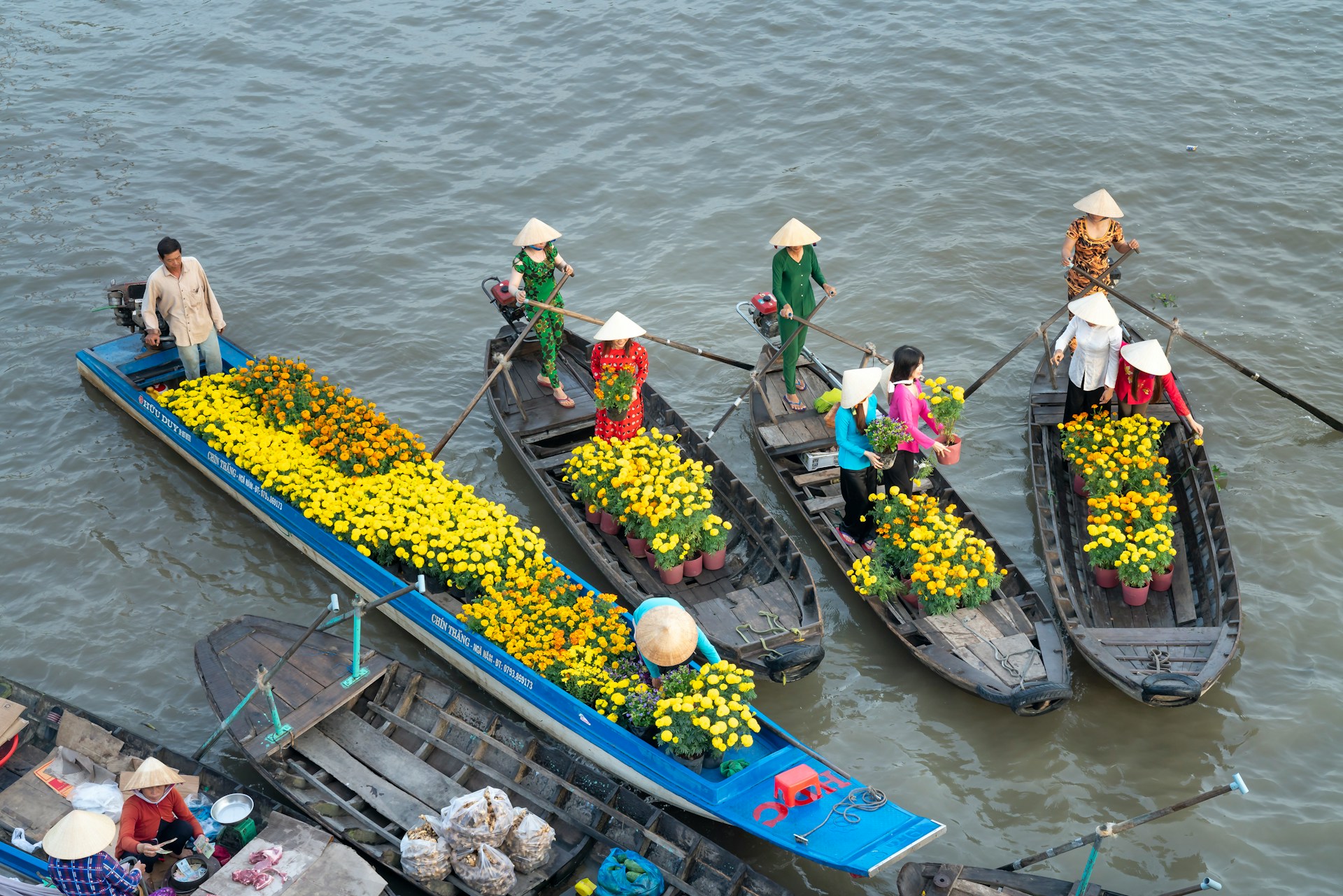
Best Time to Visit
Floating markets are busiest and most vibrant in the very early morning, typically between 05:00 and 08:00. Arriving early allows you to witness the market at its peak activity and often catch a breathtaking sunrise over the river. Aim to be on your boat by 05:00 or 06:00.
How To Get There
- Can Tho (for Cai Rang & Phong Dien): Can Tho is the largest city in the Mekong Delta and the most convenient base for visiting floating markets. You can reach Can Tho from Ho Chi Minh City by bus (around 3-4 hours, $6-$10), private car, or even by a combination of bus and boat. Once in Can Tho, you can arrange a boat tour from Ninh Kieu Wharf.
- Long Xuyen: Long Xuyen can be reached by bus or private car from Ho Chi Minh City (around 4-5 hours, $8-$12). Once in Long Xuyen, head to O Moi ferry wharf to find boats.
- Tra On: Tra On is further south and may require an overnight stay in Vinh Long City. From Vinh Long, you can hire a taxi or motorbike taxi to Tra On town, then a boat to the market.
What to Bring
- Sunscreen and Hat: The sun can be intense on the water, even in the early morning.
- Water: Stay hydrated, especially in the tropical climate.
- Small Bills (USD or VND): Most vendors prefer cash, and having smaller denominations (10,000 VND, 20,000 VND, 50,000 VND notes or $1, $5 bills) makes transactions easier.
- Camera: For capturing the vibrant scenes.
- Waterproof Bag: To protect your electronics from splashes.
Choosing a Tour vs. Independent Exploration
- Tours: Many tour operators offer organized trips to the floating markets from Ho Chi Minh City or Can Tho. These often include transportation, a local guide, and visits to other attractions like fruit orchards or noodle-making workshops. Prices vary widely depending on the duration and inclusions, from $20 for a half-day shared boat tour to over $100 for private, multi-day excursions.
- Independent Exploration: It is possible to arrange a private boat directly at the wharf (e.g., Ninh Kieu Wharf in Can Tho). This offers more flexibility and allows you to explore at your own pace. Bargain for the price before setting off. A private boat for a few hours at Cai Rang might cost around $20 – $40, depending on the boat size and your bargaining skills.
Bargaining Etiquette and Local Customs
While bargaining is common in Vietnamese markets, do so politely and with a smile. Don’t aggressively haggle over small amounts, as a few cents can mean a lot more to a local vendor than to a tourist. Remember that these are working markets, not just tourist attractions. Be respectful of the local way of life.
In Short
Vietnam’s floating markets are bustling centers of commerce and cultural treasures where tradition and daily life come together on the vibrant waterways of the Mekong Delta. Whether you’re amazed by the energy of Cai Rang or soaking in the authenticity of Phong Dien, these markets offer a travel experience unlike any other—rich in colors, flavors, and genuine connections.
Ready to embark on your own unforgettable adventure? Let Asia Travel Pioneer be your trusted guide in discovering the heart and soul of Vietnam’s riverside culture. Book your journey today, and allow us to help you create memories that will last a lifetime!
